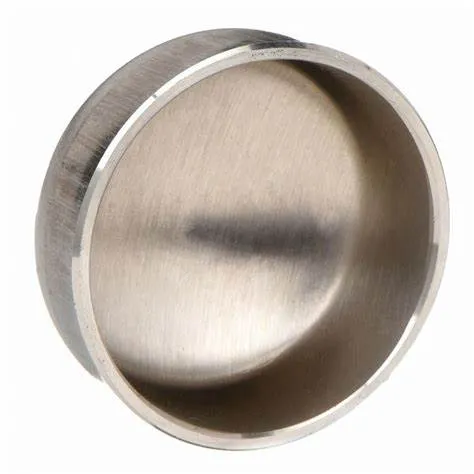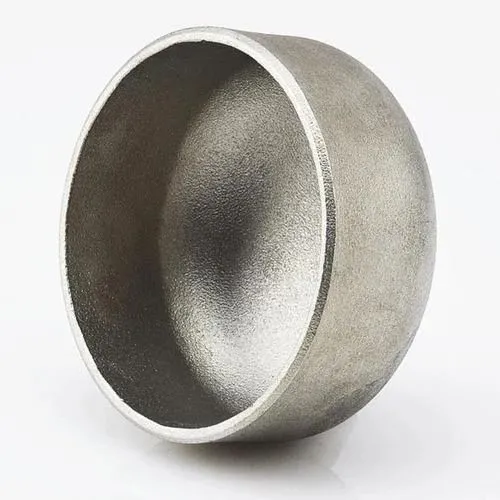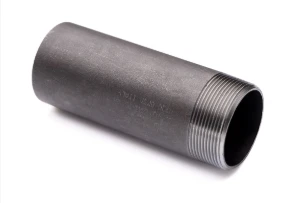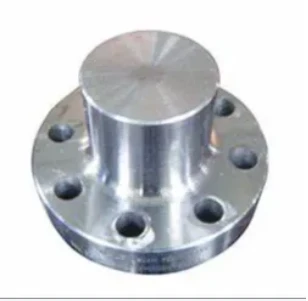JIS B2311 est Standard Industriale, quod instrumentorum fistularum fistulae glutino tegit, galeros in limbis systematis adhibitis. Pileis glutino inserviunt fini tibiae claudendae, sigillum praebens ne lacus vel contagione. Prooemium hic est ad galeros JIS B2311;
- 1. JIS B2311 Standard:
- - JIS B2311 norma postulata designat ad consilium, dimensiones, materias, fabricandas et probatio instrumentorum fistularum, cum pileis, in limbis systematis.
- - Vexillum efficit ut pileos in obsequio cum signis JIS signatis qualitates occurrant et componantur cum aliis limbis componentibus.
- 2. Cap: Butt-Welding;
- - Pila petula, secundum JIS B2311, apta est ad finem fistulae velandi et obsignandi secure, tutelam praebens et integram fistulam servans.
- - Capsulae adhibentur in condicionibus ubi fistulae finis clausuram requirit, vel permanenter vel ad tempus, ne lacus, contaminatio, vel metam rationi praebeant.
- 3. Materia et Constructio:
- - Butt-welding caps sub JIS B2311 specificationibus praesto sunt in variis materiis sicut chalybs carbonis, chalybs immaculata, et stannum chalybs ad diversa applicationis requisita.
- - Hae pilei fabricantur methodis constructionis normatis utentes, ut connexio fortis et liberorum liberorum connexio ad finem fistulae iuncta efficiatur.
- 4. Application et Beneficia:
- - Butt-welding pileos applicationes in variis industriis inveniunt, incluso oleo et gas, processibus chemicis, plantarum curatione aquaticarum, et plura ubi desinentia fistulae secure cappari debent.
- - Caps tutelam praebent tibiae ab elementis circumiectis finibus, contaminationem impediunt, et adiuvant ut munditiam et integritatem fistulae systematis servent.
- 5. Installation and welding:
- - Propriae institutiones institutiones, etiam rectae alignment, praeparatio tibiae finis, et ars glutino necessaria, cum galeros inaugurari oportet ut sigillum strictum et probationem rimam praebeat.
- - Welding communis est methodus applicandi tibias pileos, firmam firmam ac permanentem clausuram quae pressuram, temperaturam variationes et fluidum intra systema fluere potest.
- In summa, JIS B2311 pileorum glomeratorum cruciales sunt componentes in limbis systematis obsignandi et finem tibiarum secure tutandi. Hae pilei conformantur exigentiis normatis ad curandum qualitatem, fidem et convenientiam in applicationibus industrialibus, ubi clausurae et tutelae necessariae sunt.
What Is a Butt Welding Cap and How Is It Used in Industrial Piping?
In industrial piping systems, end-of-line sealing and branch closures require robust solutions. A butt welding cap serves as a critical component for terminating pipes securely. By providing a seamless, welded closure, this fitting maintains system integrity, prevents leaks, and supports compliance with industry standards.
What Is a Butt Welding Cap?
A butt welding cap—also called a pipe end cap or buttweld end cap—is a round fitting designed to close off the end of a pipe. It’s manufactured to match the pipe’s outer diameter and schedule, with either a hemispherical or flat face. To install, both the pipe end and cap are beveled to form a V‑groove, enabling full‑penetration, fusion welds. Common materials include carbon steel, stainless steel, nickel alloys, and other engineered grades, chosen to satisfy pressure, temperature, and corrosion‑resistance requirements.
How Is Butt Welding Cap Used in Industrial Piping?
Butt welding caps find application across oil & gas, petrochemical, power generation, water treatment, and general process industries for both permanent and temporary closures. During hydrostatic testing, technicians install caps to seal off sections of piping while monitoring for leaks. In new construction or retrofit projects, caps terminate branch lines, future tie‑in spools, or dead‑end mains until system expansion. Welders prepare each joint by cleaning and beveling surfaces, aligning the cap precisely, and executing a root pass followed by filler passes per the qualified Welding Procedure Specification (WPS). Post‑weld heat treatment and non‑destructive examination (NDE)—such as radiography or ultrasonic testing—verify weld integrity and compliance with ASME B16.9 and related standards. Additionally, temporary caps enable safe isolation during maintenance, allowing for segment testing and dewatering under regulatory protocols.
Benefits and Best Practices
Butt welding caps offer a smooth‑bore transition that minimizes flow disruption and stress concentration. Their full‑penetration welds deliver exceptional structural strength and leak resistance. To optimize performance, engineers should:
Select caps with matching material grades and wall thicknesses
Adhere to proper bevel angles and joint fit‑up tolerances
Follow qualified WPS protocols rigorously
Consider cladding or protective coatings in corrosive environments to extend service life
Regular inspection and thorough documentation ensure long‑term reliability and safe operation under demanding conditions.
Butt welding caps are indispensable components for achieving durable, leak‑proof pipe terminations in a wide range of industrial applications.
Butt Welding Cap FAQs
What is a butt welding cap?
|
What materials are commonly used?
|
What standards govern butt welding caps?
|
How are butt welding caps installed?
|
Where are butt welding caps typically used?
|
What are the advantages of threaded caps?
|
















